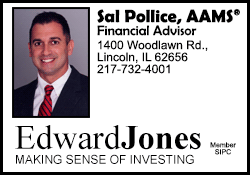|
 Navinder Singh Sarao, 36, was arrested in London on Tuesday, charged
with market manipulation and wire fraud. Authorities sought to link
his activities to the May 6, 2010, so-called flash crash when about
$1 trillion was temporarily wiped out from U.S. stock markets in a
matter of minutes. Navinder Singh Sarao, 36, was arrested in London on Tuesday, charged
with market manipulation and wire fraud. Authorities sought to link
his activities to the May 6, 2010, so-called flash crash when about
$1 trillion was temporarily wiped out from U.S. stock markets in a
matter of minutes.
The CME Group <CME.O>, the platform Sarao used for his trades and
also a self-regulatory organization, first started talking to him
about his trades in 2009, but he continued his alleged manipulation
well into this year.
The fact that manipulation wasn't identified as the cause of the
flash crash in a September 2010 report, suggests that regulators did
not see his activity at that time.
"This will raise concerns about the stability of financial markets,"
said Robert Engle, finance professor at New York University's Stern
School of Business. "That this trader could put the markets in a
tailspin with actions that are hard to detect is bad news."
Tim Massad, the head of the Commodity Futures Trading Commission,
which oversees the trading of futures and swaps, said on Wednesday
that it took so long to charge Sarao because of the size and
complexity of U.S. derivatives markets. "These are huge markets," he
said. "There's a lot going on."

The agency, which oversees self-regulatory bodies such as the CME,
brought civil charges against Sarao alongside criminal charges by
the Department of Justice.
The many years it took for the CFTC to come out with its findings,
and the fact that manipulation wasn't mentioned in the 2010 report,
suggested that the help of a whistleblower was essential in bringing
the charges, one lawyer said.
"This can't have been a five-year continuous investigation, can't
have been," said the lawyer, who is familiar with the CFTC's
thinking, and who asked to remain anonymous. "Something happened
some period later where this came up again.
"If there was any indication that there was manipulation behind
this, given the profile of this, the agency would have proceeded. It
wouldn't have taken five years."
The 2010 Dodd-Frank law made it easier for the CFTC to prove market
manipulation, including the so-called spoofing and layering tactics
that are said to have unduly affected futures prices, netting Sarao
a profit of $40 million over a period of several years, according to
the complaints.
In the past, it's taken years to make even small cases against
traders. CME last week fined a corn futures trader $20,000 for
non-competitive trades executed from 2008 to 2010, and a
gold-futures trader $25,000 for exceeding trading limits during a
weeklong period in September 2009.
[to top of second column] |

An additional problem is that the market is so rapidly developing.
David Widerhorn, whose company makes spoofing and layering
surveillance software, said six years ago, there might not have been
enough of an idea among information technology firms that these
could be activities that were prohibited.
Sarao was the holder of a "seat" on the CME, which entitled him to
discounts, with a minimum of vetting procedures. Trading can only be
done through a brokerage, of which Sarao used four during the time
described in the complaint.
CME CONFLICT
Critics said the case also raised questions over the exchange's
role. CME is "massively conflicted" in policing high-frequency
traders using its markets because it makes money off the high volume
of transactions they provide, said James Koutoulas, chief executive
of Typhon Capital Management.
The division of labor between self-regulatory bodies such as the CME
and the CFTC, the federal regulator, is another complication. The
CFTC in November told CME it should focus more on identifying
spoofing, after an agency review found the exchange operator's
internal programs identified few cases in its Nymex and Comex
markets. CME at the time said it had a clear record of prosecuting
spoofing.
Many such questions will be asked again as the case develops in
coming months.
"There are a lot of ifs here," said Troy Buckner at hedge fund
NuWave Investment Management. "Given that it has taken five years
for any regulatory action to be taken, I'd say there are still a lot
of outstanding questions to be answered."
(This story has been refiled to fixes typo in spelling of Widerhorn
in paragraph 13)

(Reporting by Douwe Miedema in Washington and Ann Saphir in San
Francisco, Additional reporting by Tom Polansek and Karl Plume in
Chicago, and Herb Lash and John Spicer in New York, additional
writing by David Gaffen. Editing by John Pickering)
[© 2015 Thomson Reuters. All rights
reserved.] Copyright 2015 Reuters. All rights reserved. This material may not be published,
broadcast, rewritten or redistributed. |